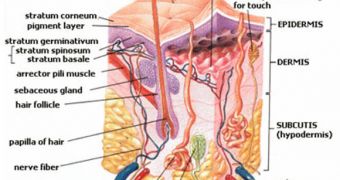An international collaboration of scientists from the United States and Spain has successfully developed a method of analyzing the vapors that the human skin emits in real time. The experts believe that these substances, mostly fatty acids, are the chemical triggers that attract mosquitoes to us, and also the stuff that allows dogs to accurately identify their owners. The team, made up of investigators from Boecillo Technology Park, in Valladolid, and the Yale University, published details of the new device in the latest issue of the Journal of the American Society for Mass Spectrometry, AlphaGalileo reports.
“The spectrum of the vapors emitted by human skin is dominated by fatty acids. These substances are not very volatile, but we have developed an 'electronic nose' able to detect them,” study co-author and Yale University Department of Mechanical Engineering expert Juan Fernandez de la Mora explains, quoted by SINC. “The great novelty of this study is that, despite the almost non-existent volatility of fatty acids, which have chains of up to 18 carbon atoms, the electronic nose is so sensitive, that it can detect them instantaneously.”
With the new instrument, vapors emanating from a human hand, for example, are pulverized with an electrospray, which ionizes them, and then analyzed via mass spectrometry. An electrospray is basically a cloud of electrically charged drops. The experts say that spraying with this compound is completely harmless to humans. According to the team, a large number of fatty acids coming from the skin were identified via this new technique.
The instrument relies heavily on technology developed by 2002 Nobel Prize in Chemistry Laureate Professor John B. Fenn. Currently a University of Virginia researcher, Fenn set the groundwork for creating ionization via mass spectrometry electrosprays, and won the prestigious award for applying his theory to the field of protein analysis. The new system is so sensitive, that it can detect concentrations of various compounds in proportions of less than a few parts per trillion.

 14 DAY TRIAL //
14 DAY TRIAL //